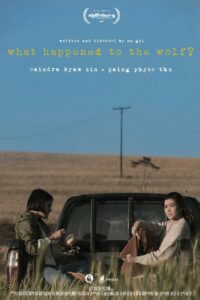By: Gabrielle McLaren, Editor-in-Chief
Like a rare meteor that only appears when the Governor General calls — it’s election time in Canada; which means that all your relatives on Facebook are going to start acting up and you, my friend, are going to have to start thinking about where and how you’re going to vote. If you’re over the age of 18 and a Canadian citizen, that is. You can double check your voter registration online (something that you can do at the polls, but might want to check in advance if you’re living away from home).
The Peak is here to help you do two things. First — figure out how elections and our system of representation work in the first place. Next — figure out how to make it work for you so that you can vote.
In case your high school social studies failed you, here’s how our Parliament works:
Yes, I know, boring, but you need to know this so that you can understand where your vote is going and why it matters.
Essentially, Canada is divided into 338 pieces called ridings. Ridings are geographical entities, but their boundaries are decided by population — which is why there are more ridings in Vancouver than there are in all three territories put together. This is also why federal and provincial ridings are different and why new ridings pop up as the population grows.
Every riding gets a seat in the House of Commons in Parliament, which will be occupied by a member of Parliament (MP). When election season rolls around, Canadians vote for the candidate that they want to send to Ottawa through a first-past-the-post system: meaning that the candidate with the most votes wins the seat. That’s who you’re voting for; unlike Americans, we don’t vote directly for our head of government. And our head of state is a different person entirely.
That being said, candidates typically represent political parties though a few run independently (it’s harder, due to lack of resources, but it happens). So at the end of the day, the party that has the most candidates in the House of Commons is invited by the Governor General, who represents the Queen, to form government, and the leader of that party becomes the Prime Minister.
For a party to be considered an official party in Canada, it needs to hold 12 seats in the House of Commons — so the Liberals, NDP, and Conservatives are in while the Bloc Québecois, Green Party, and Peoples’ Party of Canada (thank God) are out. This affects their funding and the amount of time they get during Question Period among other procedural things.
You’ll be able to hear party leaders debate on October 7, at the official English language debate, and at an informal debate on October 2.
With these procedures in mind: if the idea of voting in the federal election feels overwhelming and pointless, or if you can’t pick a candidate you love more than the others, think back to your riding. Think of the local issues, the local candidates, and the promises they’re making for your community. This is more manageable. One thing that this piece won’t try to do is hammer a kumbaya notion that every vote matters into you, even if I think it’s true; but I would encourage you to think of voting as something complex that has repercussions and implications on multiple levels.
Here’s how you can vote if you’re . . .
. . . a student from Vancouver in Vancouver
If you’re originally from the Lower Mainland or can get to your home riding to vote; great. Mark your calendar: election day is Monday, October 21.
You could always vote during advance polling, which will take place from October 11–14. If you’re registered to vote at the address where you live, you should be getting a voter information card with details or, after October 2, you can check online for your riding’s advanced polling times and dates.
You’ll want to start by finding your riding on Election Canada’s website. The site allows you to search for your riding by postal code, electoral district name, candidate name, map, place name, or by going down a list. There, you’ll find all your riding-specific instructions there; including a list of places where you can vote (and their accessibility features). This website also lets you see a full list of confirmed candidates for your riding and a list of past results if you’re curious about how your riding’s voted in the past.
On election day: show up with the appropriate ID — a list of options is available online. Good news for students: a student ID is an acceptable piece, if you pair it with something like a bank statement or utility bill that has your address on it. If you don’t have ID, you can also have someone with ID vouch for you.
. . . a student from out of town
Vote by mail: You have to apply to vote by special ballot by October 15 at 6:00 p.m. online (or at a local Elections Canada office). Do. Not. Miss. This. Deadline. You’ll be asked to submit proof of your identity, same as everyone else, and you’ll receive a special ballot voting kit in the mail. Essentially, you’ll get a blank ballot on which you write the first and last name of the candidate you want to vote for, and then you mail it back to Elections Canada.
. . . a student outside of the country
First off, congrats on your cool study abroad experience, your sudden streak of wanderlust, or that cool school outside of Canada you’re attending while still reading The Peak. You’ll want to get in touch with your local embassy or consulate (which you can find through Global Affairs’ website) so that you can vote by special ballot through them.
. . . a student who will be on campus and can vote between classes through the Vote on Campus program
Once upon a time in 2015, Elections Canada set up a pilot project to help make it easier for students to vote by opening polling stations just for us. 70,000 votes were cast on university campuses by special ballot vote. This year, Elections Canada expanded the program for students at 115 post-secondary institutions across the country to vote October 5–9.
SFU participated in the 2015 pilot project and boasted an incredibly high voter turnout. This year, SFU students will be able to vote at three separate stations at the Burnaby Campus, which opens at 9:00 a.m. throughout the Vote on Campus period, closing at 6:00 p.m. on Saturdays, 4:00 p.m. on Sundays, and 9:00 p.m. on weekdays.
SIDEBAR: Voting timeline
- 1867 : In the first Canadian election ever, Sir John A. Macdonald becomes the first PM. That being said, only male British subjects over the age of 21 with certain property qualifications could vote, so . . . yeah . . . Elections were also run by provinces, meaning that the guidelines, procedures, and even timelines of elections varied from place to place which created a whole lot of confusion, nonsense, tomfoolery, and shenanigans.
- 1874: The Liberal government introduce a secret ballot instead of having everyone hop on stage and yell out their choice candidate in the village square. In a completely shocking turn of events, this also led to less violence at the polls and reduced corruption more generally.
- 1898: Achievement unlocked: universal male suffrage rolls out across the country, abolishing the property and income criteria that had kept many voters (especially people of colour) out of the voting booths.
- 1917: One step forward, one step back: women serving in the military or married to active members gain the right to vote. But since we’re in the middle of the war, people are feeling racist and a chunk of voters from “enemy countries” or who happen to speak too much German get disenfranchised.
- 1918: Women gain the federal vote, unless otherwise barred due to racial laws. The first woman ever elected, Agnes MacPhail, won a seat immediately after this.
- 1948: The last barrier against Asian Canadian voters is lifted, when the federal government decides that people being discriminated against by provincial voting laws (i.e. those in British Columbia) shouldn’t disenfranchise voters at the federal level. BC repealed their laws in 1949.
- 1950: Inuit people gain the right to vote, though the absence of polling stations in the North means that this right couldn’t be practised.
- 1960: First Nations people with Indian status gain the right to vote without losing their status.
- 2019: You are here.
Tools and useful links
- Election Canada’s Voter Information Services (find your riding, candidates, polling station, apply to vote by special ballot, etc)
- Read up on the parties
- Bloc Québecois website (note: their website is entirely in French and they don’t run candidates outside of Québec, but it wouldn’t have felt fair not to put them in)
- Conservative Party of Canada website
- Green Party of Canada website
- Liberal Party of Canada website
- Neodemocratic Party of Canada website
- People’s Party of Canada website
- Summaries and guides produced by media:
- Election Canada pages















[…] where do we start? The Peak has published a cheat sheet for useful voting information that I encourage you to check out. This article gives you a basic […]